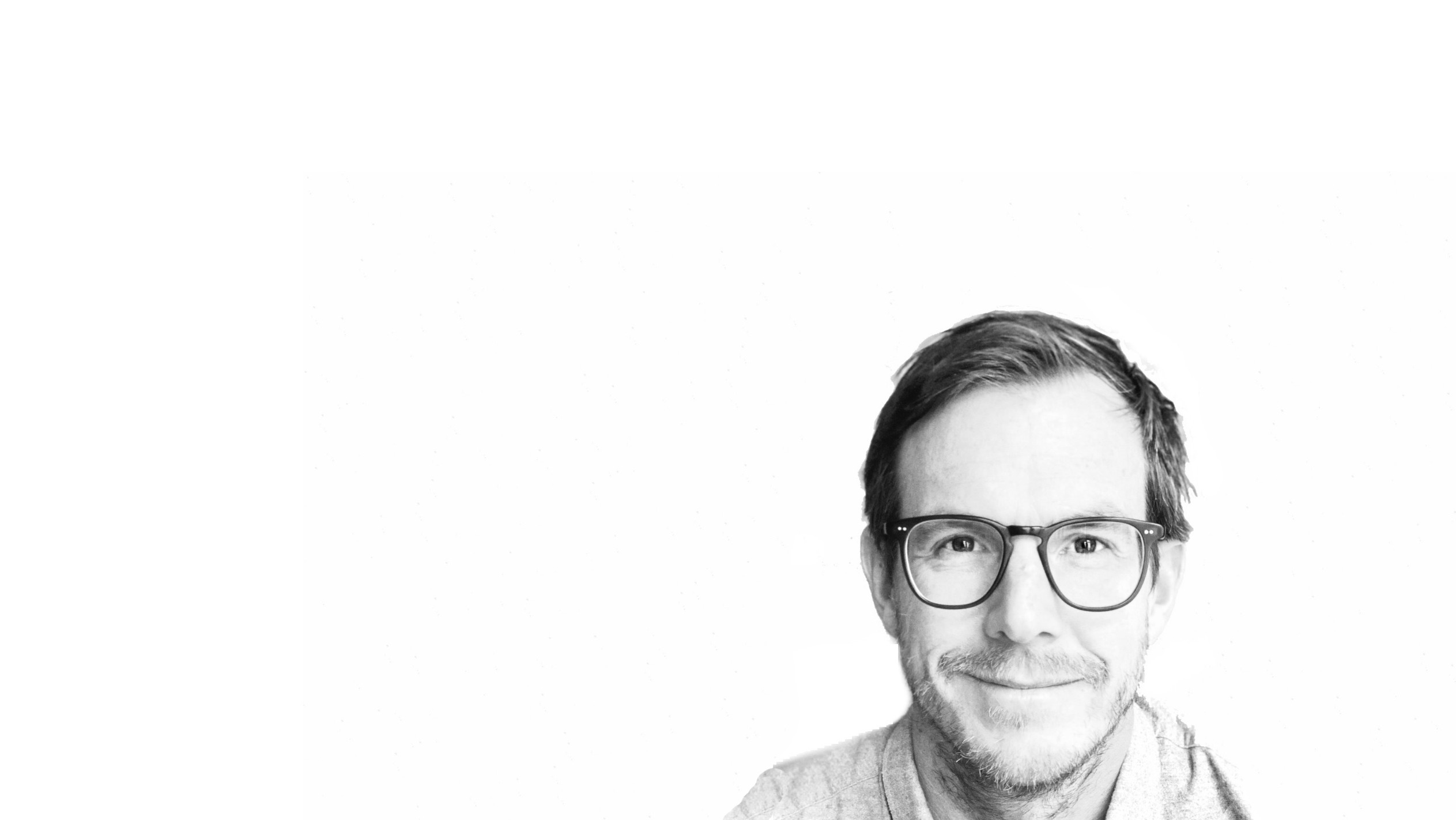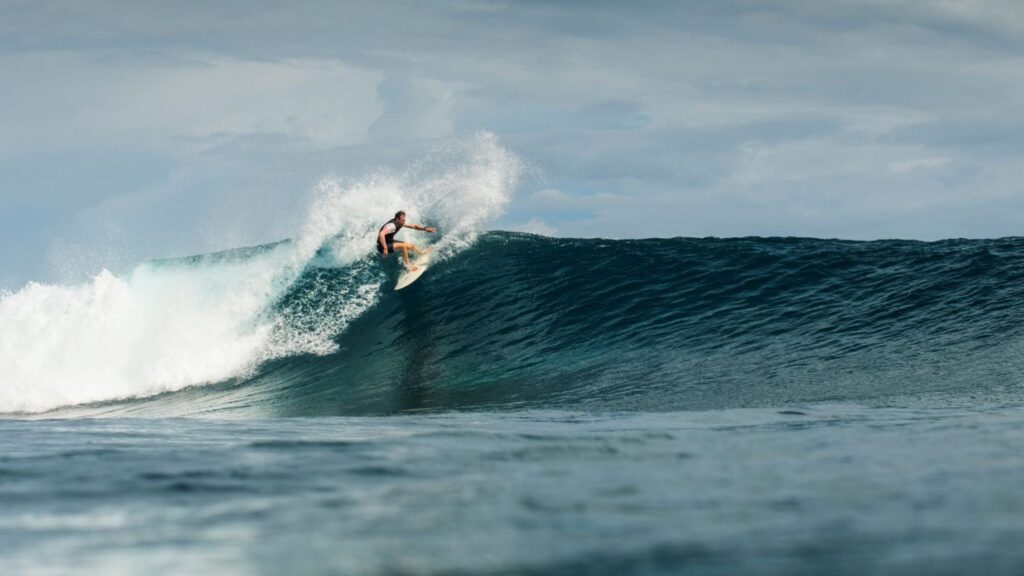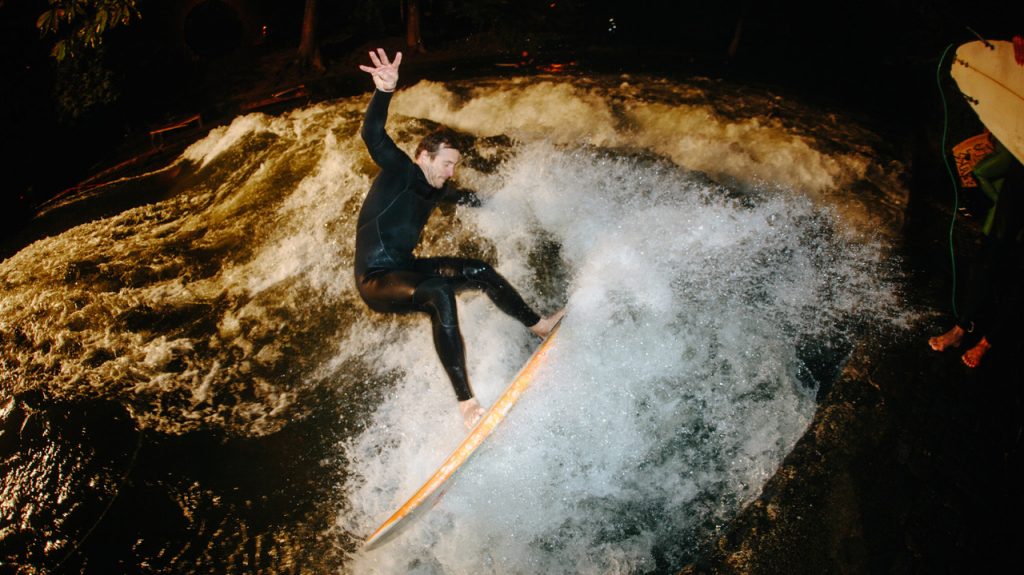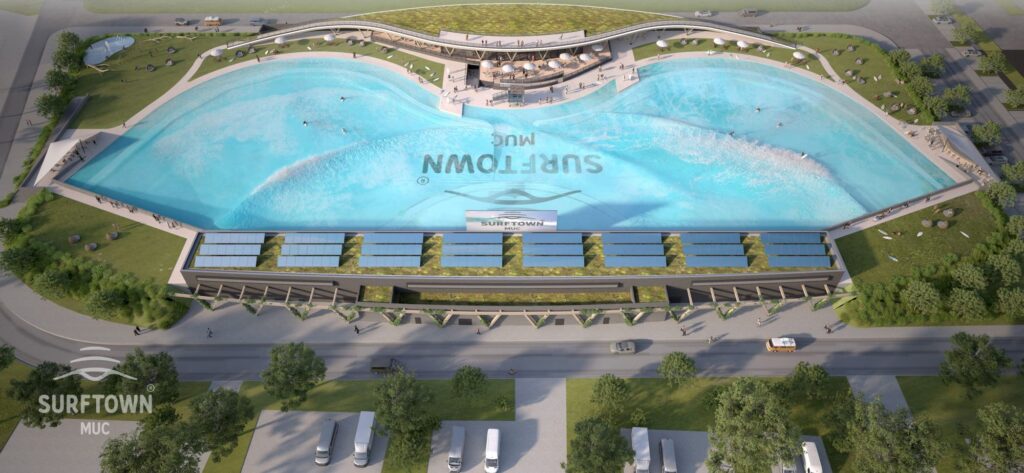Talking German surfing, wave pools, and the future with Quirin Rohleder

The latest news of SURFTOWN MUC breaking ground has stirred up a lot of excitement in Munich and in the region. The surf park will cater to an existing, vibrant surf community centered around the Eisbach river wave in the heart of the city. Between this stationary wave and (if you’re lucky) the occasional surf trip throughout the year, the German surf scene is devoted, unique, and hungry for a new homebreak. To dive into the topic of German surfing and the future of it, we were lucky enough to sit down with one of Germany’s most influential surfers, Quirin Rohleder who is a Munich local, Eisbach legend, and a co-founder of the Rapid Surf League.
Let’s learn about you first. When did you start surfing and what do you love most about it?
I started surfing in Munich. I discovered the world famous Eisbach wave when I was 13 years old. A friend of mine and I went on a bike ride, and we just happened to pass by the wave. I actually grew up not too far away from the wave, but it was never really in my daily direction. When I discovered it, I think I stood there the whole day watching and the next day I came back and tried to figure out how to get myself a board… What I did was, on my way home, I saw a construction site and at a certain stage of a house’s construction, they use Styrofoam material to insulate the houses. So I kind of just grabbed one (well, stole one…) so I could shape myself bodyboard. I went every day from the age of 13 onwards. I think a year or two later, I bought my first surfboard and that fueled the passion for surfing. I stayed and surfed the river for quite some time until I was 25 and as soon as I finished my studies, I went straight to the ocean because that’s kind of like the natural step.

How has river surfing shaped your surf style?
I started surfing the Eisbach and then went to the ocean and it always back and forth. So, I’ve always tried to incorporate everything I did at the Eisbach, in the ocean and vice versa. Growing up, I didn’t really have the chance to head to the ocean often, but as soon as I got my driver’s license, we took trips in the old VW van to the French coast. From an early age on, I tried to look at the really good surfers in the ocean, like Kelly Slater and whatnot, and then try to simulate kind of the same thing while riding a stationary wave. I believe I was one of the first to bring that kind of ocean surf style into river surfing. And, obviously river surfing helped me a lot when I went to the ocean for the first time. I obviously had to learn to read the ocean and stuff like that, but it (the Eisbach) helped me a lot.
With surfing now in the Olympics, what do you think the impact is on German surfing and the surf park industry?
Surfing now being a part of the Olympic games is obviously helping and growing the sport. As soon as a sport gets Olympic status, especially in countries like Germany, it gets like check the box that it’s something real. Even for the Germans, I would say because you can start winning medals, it’s kind of “important.” But yeah, the fact that surfing is now an Olympic sport obviously helps the whole industry with wave pools and rapid pools.
With new tech advancements and entirely new wave technologies, what does it mean for inland surfing?
I think that we are only at the beginning of what’s possible in a rapid pool or in a wave pool. Obviously, the first goal is to get more people onto waves. So, the beginner has always been the main focus and getting these people into a safe and easy wave to start surfing? Moving forward, the important thing in the future is going to be able to pump out a vast variety of waves where you might not even know what’s going to come next. You could even put things on a random setting. You might know that there’s a left or a right coming but you don’t really know what the sections are gonna do. I think this will be important in the future for when you look at organizing events and contests in wave parks. Technology-wise, there’s endless potential with new technologies. That’s pretty much why we’re so excited about Endless Surf coming to Munich, because if the system allows you to really modify and customize different settings, then we definitely have a winner.

Let’s talk about SURFTOWN MUC. What is the impact for German surfing and for Europe?
Being the first wave pool in Germany, and the largest in Europe, that’s what’s really exciting for me. You can open the sport to a whole different category of people who would’ve never gotten in touch with surfing. You obviously have a core scene of people surfing in Germany with those who surf the Eisbach. Then you have a lot of Germans going to the ocean and surfing there, whether in France, Portugal, Indonesia, etc., and this number is growing steadily. I have numbers from surf camps on how many people go through in a whole summer. It’s a crazy number. Obviously, not everyone’s sticking to it, but if it’s only 10%, the growth rate is huge. People are excited by the sport and with Endless Surf close to Munich you are building a completely new sport in a areas that don’t really know what surfing is all about. I mean, everyone knows what surfing is, everyone has seen a big wave or knows that there’s waves in Hawaii, but that’s just a general view. This changes the game for people living not only in Germany but also close by in Austria, Switzerland, and even the rest of Europe.
What gets you excited about the Endless Surf experience?
I like to look at the experience from a beginner’s perspective all the way up to a professional one. If you can make everyone in that category absolutely happy, then that’s the perfect scenario. With some of the older technologies, you can tell that beginners to intermediate (maybe to advanced) are happy. But, as soon as you get a step further you will get people who surf these waves a lot looking for something a little bit more exciting. To have the possibility to say, “I want to take off, and then I want to have a steep section for two, three turns, and then I want to have an air section at the end” for example, this is going to be the future because you want to please people and get them to come back to surf more. This technology will in my eyes be able to do that.
Finally, if you could program a custom wave on Endless Surf, what would it be?
I’m goofy so it’s obviously a left. I want a soft take off, not too steep (I’m getting a little older, so I’m not the fastest… just kidding), then I would like to have a section for two turns and at the end I want to have a little barrel and then come out and have one more roundhouse cut back. You can tell the engineers to start programming.

Related Coverage
